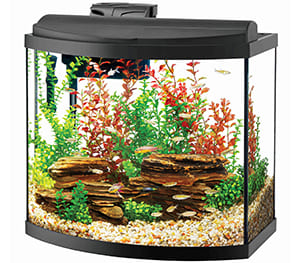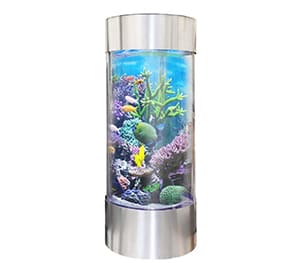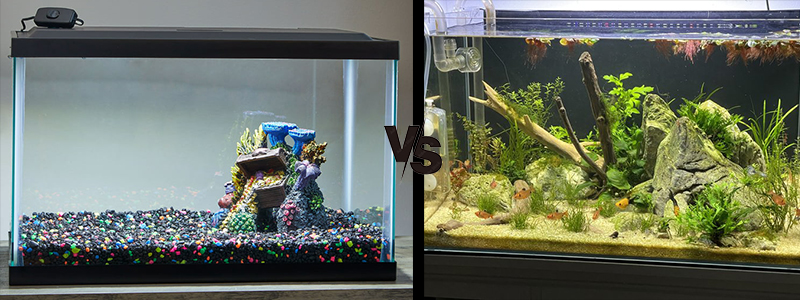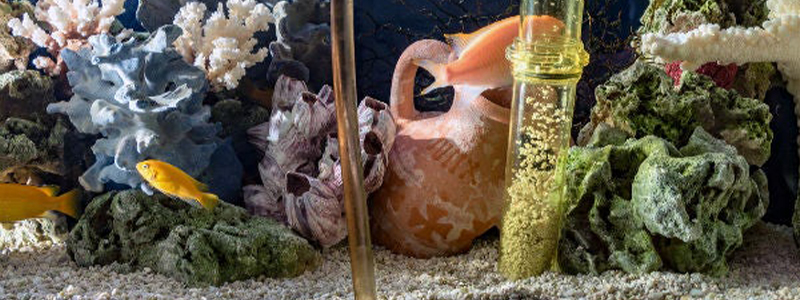Are you planning to add more fish to your current aquarium or are you thinking about getting a new one? First things first: the secret is to know how much water is in your tank. And, for that, you don’t have to search “how do I calculate the volume of my fish tank” because we got you!
This is one of the most asked questions when it comes to fish tank calculator. Why? It’s not just about space, though; it’s also about establishing a prosperous underwater sanctuary.
Explore the importance of understanding the water level in your tank, from maintaining safety to learning the correct dosage of your aquarium. With our handy aquarium volume calculator, we’ve got you covered and make the process of finding the ideal aquarium volume easier.
Disclosure: This article contains affiliate links. When you follow a link to purchase the products, I sometime earn a commission, at no additional cost to you. Read my full disclosure here
Why You Need to Be Aware of Your Aquarium Volume?
Comprehending the volume of your aquarium is essential for accurate chemical dosing. You can’t have a stable and healthy aquatic environment without medications, water conditioners, and de-chlorinators.
Moreover, understanding the volume also helps with aquascape layout planning and appropriate stocking levels. Keeping an eye on the capacity of your aquarium is essential to developing a healthy aquatic ecosystem. And, this is why you need a fish tank calculator!
Understanding Shapes of Fish Tank
1. Prism, rectangular
Aquarium enthusiasts’ go-to option is the reliable rectangular prism. Well-known for its simplicity, this traditional shape has a box-like appearance that makes height, width, and length easily visible. These three dimensions are multiplied to calculate the volume, which makes it a simple and adaptable solution for different configurations.
2. Cube
The cube-shaped aquarium is a geometric masterpiece that will appeal to those who value simplicity and clean lines. Calculating the volume when all sides are equal is as simple as increasing the edge length to the third power. This shape gives your aquatic display a sleek, contemporary appearance in addition to making calculations easier.
3. The Bow Front
The bow front aquarium’s softly curved front panel adds a hint of refinement. This shape gives you a panoramic view of your underwater environment while also enhancing its aesthetic appeal. A central angle and radius are taken into consideration when calculating the volume, providing a special formula for a tank that is remarkable both mathematically and aesthetically.
4. Front Corner Bow
The corner bow front aquarium is a unique and space-saving design that fits perfectly in corners for those looking for just that. This shape’s formula includes a half-circle segment that gives the standard bow front a dynamic twist. It’s a clever way to make the most of available space without sacrificing the cute bow-front look.
5. The cylinder
A cylindrical aquarium is a dynamic and aesthetically pleasing way to embrace curves. The height, radius, and mathematical constant π are all included in the formula for a cylinder. This form is well-liked by both novice and expert aquarists because it offers plenty of swimming room for your aquatic companions and has a distinctive appearance.
How Do I Calculate the Volume of my Fish Tank?
1. Prism or rectangular:
Consider your aquarium to be a solid, rectangular box. This timeless form is adaptable and simple to visualize. The fish tank calculator for rectangular shape is; multiplying the height, width, and length.
Rectangular volume = height × width × length
Example:
Consider a rectangular tank with a length of 15 inches, a width of 15 inches, and a height of 20 inches.
Rectangular volume = 20 × 15 × 15 = cubic inches
2. Cube
A cube-shaped tank is a good choice if you like things simple. It resembles a neat, geometric work of art. All you have to do is raise the edge length to the third power to get the formula for the aquarium volume calculator.
Cube = length³
Example:
Imagine a cube with a side length of 10 inches.
cube = 15³ = 3,375 cubic inches
3. Cylinder
The cylindrical aquarium provides a dynamic visual for those who enjoy graceful curves. The formula in the fish tank calculator presents the concepts of height, radius, and π.
cylinder = π × (radius)² × height
- For a half cylinder, the formula will be;
half cylinder = π × (diameter / 2)² × height / 2
- For a quarter cylinder, we will modify the above formula with;
quarter cylinder = π × radius² × height / 4
Example:
Consider a cylinder with a radius of 6 inches and a height of 13 inches.
cylinder = π × 6² × 13 ≈ 1470.45 cubic inches
4. Bow Front
With a slightly curved front, bowfront aquariums add a touch of elegance. The formula for the fish tank calculator requires a radius (r), as well as certain dimensions and a central angle (α).
Bowfront = height × width × length + 0.5 × r² × (α – sin(α)) × height
Where α, the central angle of the circular segment, in radians, pairs with r, the radius of a circle. Calculate α with the equation α = 2π – 4β, where β is determined by the tangent function:
tan(β) = 0.5 × length / (full_width – width).
To find the volume for a bow front aquarium intended for a corner, the formula is:
Corner bowfront = (0.5r² × (α – sin(α)) × height) / 2.
Example:
Imagine a bowfront tank with a height of 18 inches, width of 24 inches, length of 36 inches, and a central angle (α) of 1.5 radians.
bowfront = 18 × 24 × 36 + 0.5 × r² × (1.5 – sin(1.5)) × 18
5. Personalized Shapes:
Specialized tools for tanks with unusual shapes are available for those who are true innovators and think beyond the box. Go crazy with your imagination!
Note: Although unusual aquariums can be fascinating, some places may not be able to accommodate fishkeeping in them.
A Clear Guide to Determining the Water Capacity of Your Tank
Are you wondering how big of an aquarium you can have? Let’s simplify it into a few quick steps:
- Select the Shape of Your Aquarium: Picture yourself with an amazing bow-front fish tank. Select this shape first from the above list.
- Dimensions of the Input Tank: Let’s enter those figures now. Let’s say the dimensions of your tank are as follows: length: 35 inches; width: 18 inches; width: 15 inches; height: 20 inches.
- Allow the Calculator to Work: Use the formula according to the shape, and get your answer! The aquarium volume calculator quickly displays the tank’s capacity. It proudly states 51.55 gallons for our example.
- If You Want to, Convert to Litre: Have you ever wondered how many liters that would be? Our aquarium volume converts to 195.14 liters when you click on the unit name and choose liters.
Quick Note: Remember, these are approximate figures. 51.55 gallons is the result; it’s not a precise “fits-like-a-glove” measurement. We don’t account for things like the thickness of the glass or the amount of room your fish and tank accessories take up. Who, after all, fully charges their tank?
Does Shape Matter in an Aquarium?
Indeed. Volume is influenced by the shape. A rectangular tank will have a different volume than a cylindrical or hexagonal one even if they have the same dimensions. For an accurate estimate of volume, use our easy-to-use aquarium volume calculator by entering the dimensions and shape of your tank.
How many fish can you add to your aquarium without risk?
“How many fish can I add to my tank?” is a frequently asked question among aquarium enthusiasts. It’s not as simple an answer as you might think. It’s important to consider the kind of fish you have and their specific requirements in addition to the tank’s size.
You can generally keep one centimeter of fish per liter of water. Therefore, you can safely keep up to 20 cm of fish in a 20 litre tank. Keep in mind that the actual number may differ based on the species of fish; this is only a rough estimate.
Conclusion
Size counts in the world of fish tanks. Acquiring the right amount of water for your aquarium is essential for a healthy fish community; it’s more than just maths. Thus, use the fish tank calculator to calculate water volume as a guide when choosing a new tank or adding a fish companion.








